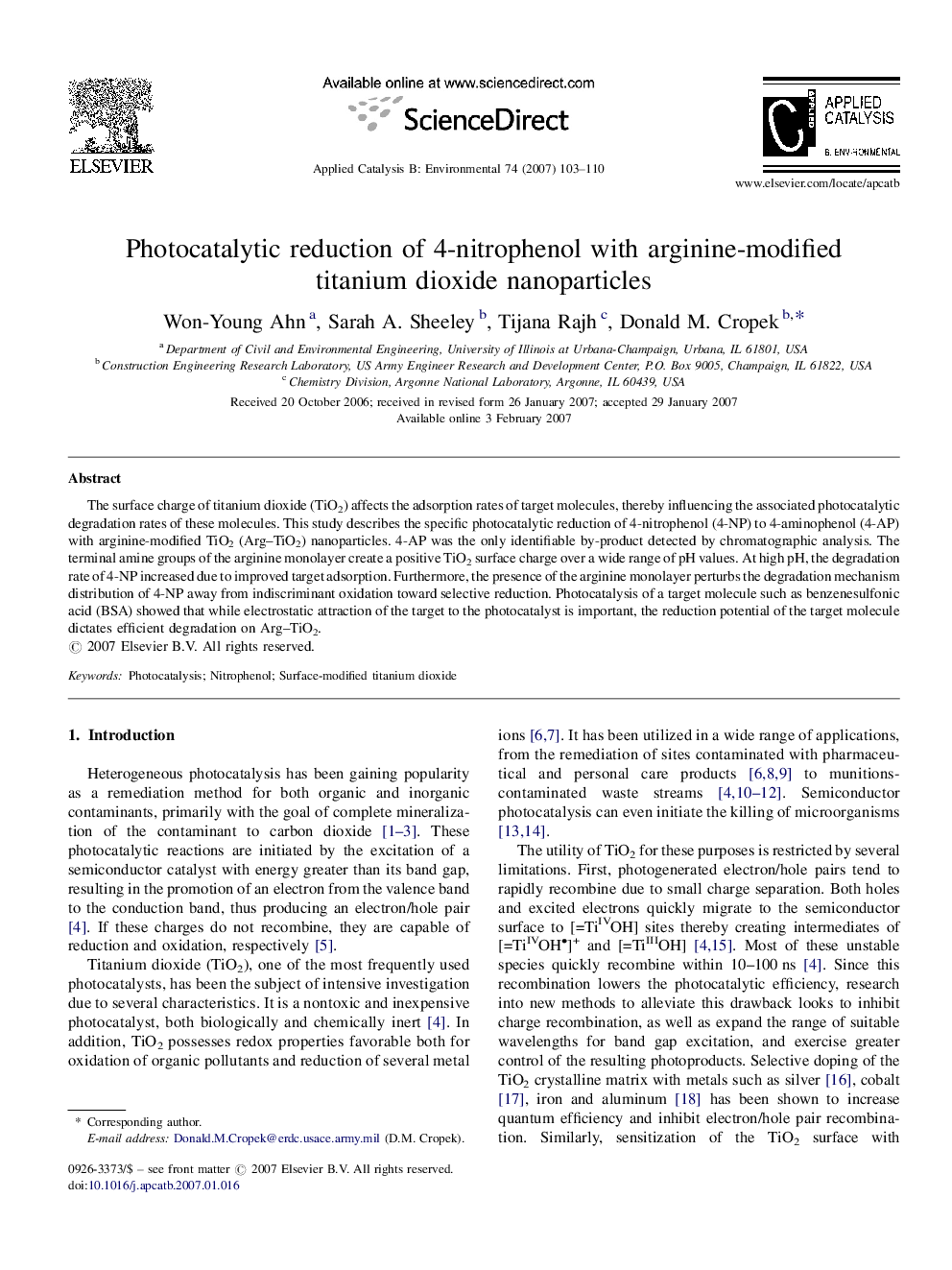| Article ID | Journal | Published Year | Pages | File Type |
|---|---|---|---|---|
| 48761 | Applied Catalysis B: Environmental | 2007 | 8 Pages |
The surface charge of titanium dioxide (TiO2) affects the adsorption rates of target molecules, thereby influencing the associated photocatalytic degradation rates of these molecules. This study describes the specific photocatalytic reduction of 4-nitrophenol (4-NP) to 4-aminophenol (4-AP) with arginine-modified TiO2 (Arg–TiO2) nanoparticles. 4-AP was the only identifiable by-product detected by chromatographic analysis. The terminal amine groups of the arginine monolayer create a positive TiO2 surface charge over a wide range of pH values. At high pH, the degradation rate of 4-NP increased due to improved target adsorption. Furthermore, the presence of the arginine monolayer perturbs the degradation mechanism distribution of 4-NP away from indiscriminant oxidation toward selective reduction. Photocatalysis of a target molecule such as benzenesulfonic acid (BSA) showed that while electrostatic attraction of the target to the photocatalyst is important, the reduction potential of the target molecule dictates efficient degradation on Arg–TiO2.
